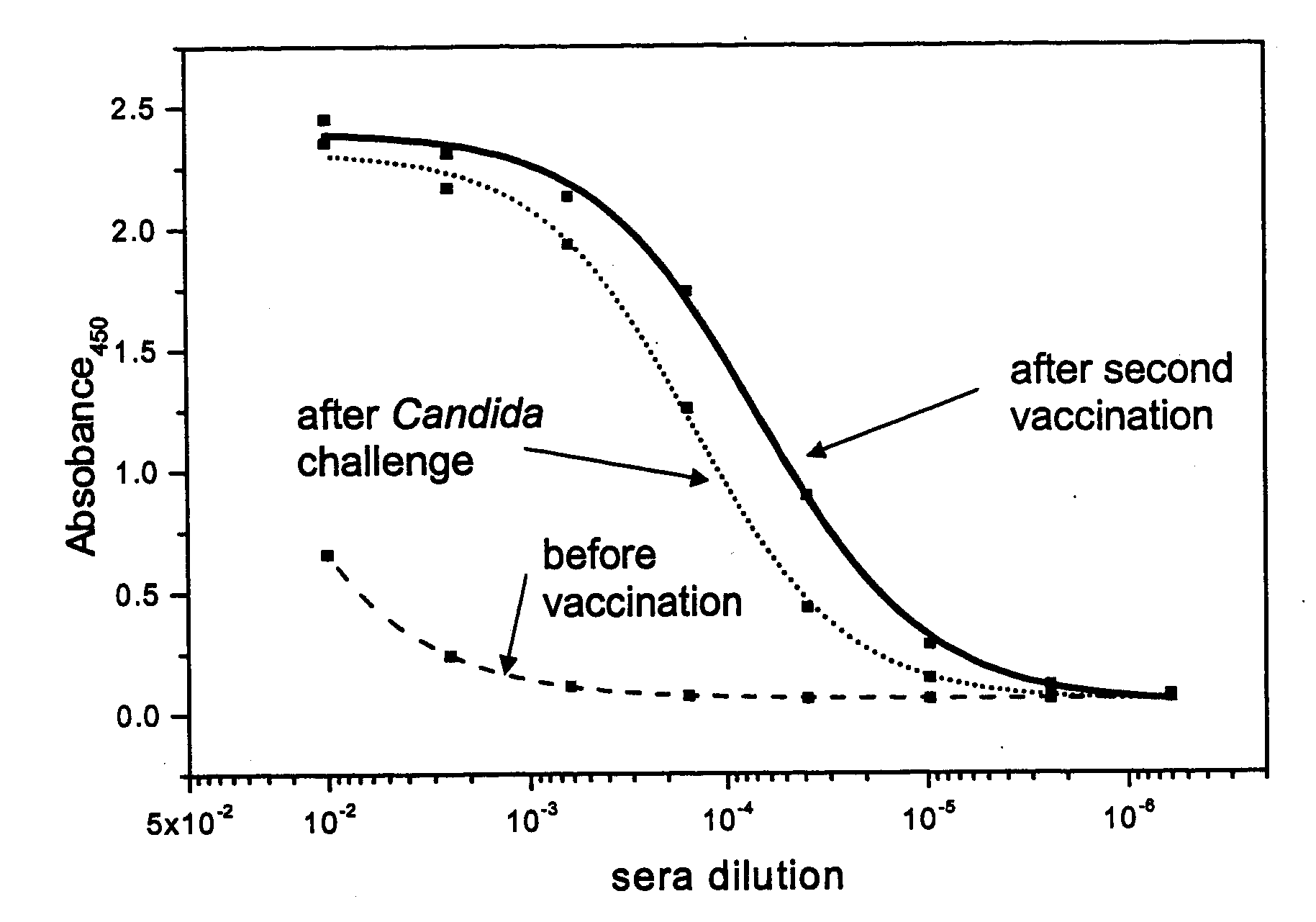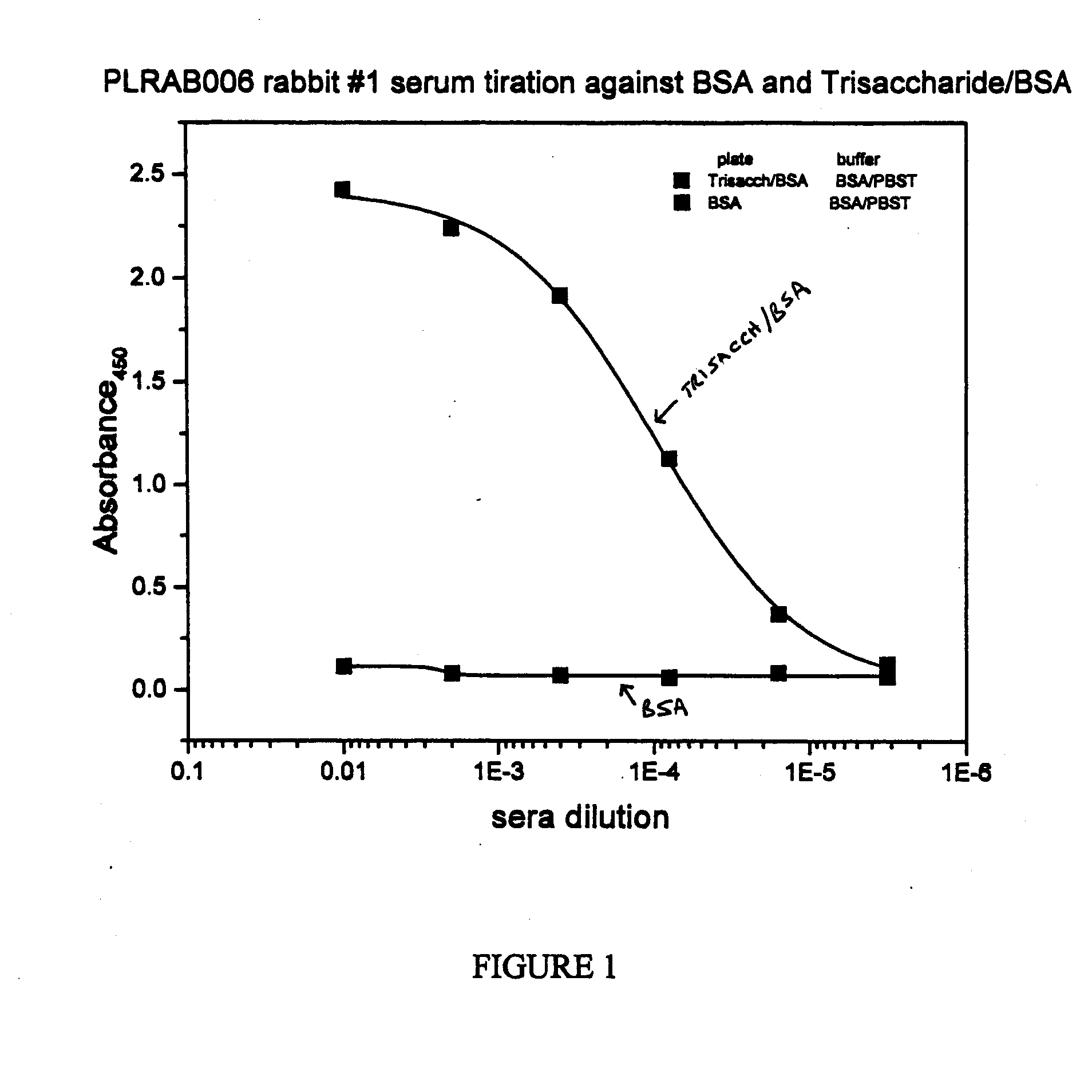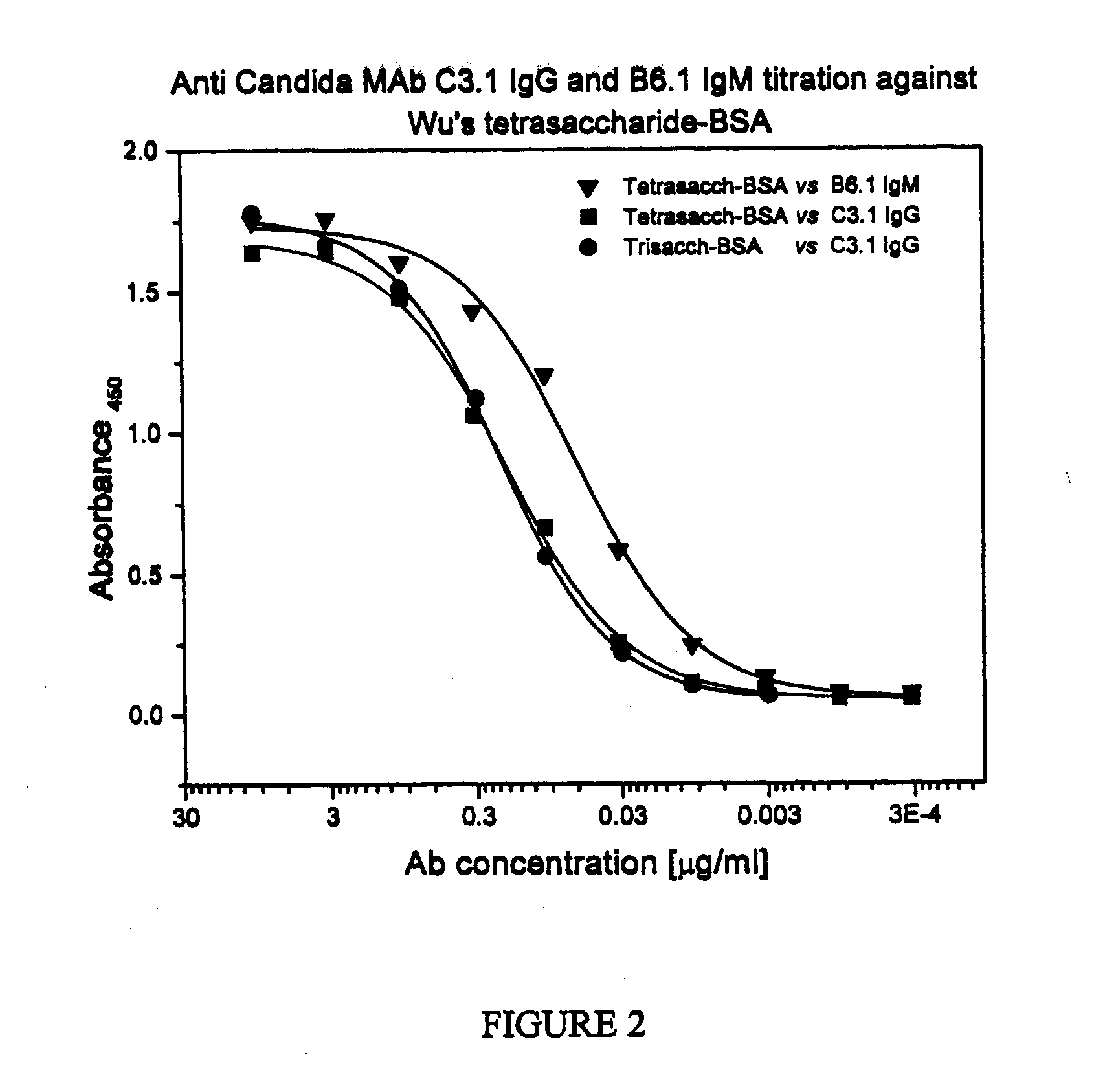Synthetic Anti-Candida Albicans Oligosaccharide Based Vaccines
a technology of oligosaccharide and candida albicans, which is applied in the direction of oligosaccharides, sugar derivatives, non-active ingredients of pharmaceuticals, etc., can solve the problems of asymmetric separation of anomeric mixtures, a major obstacle to efficient assembly by either block or sequential chain extension reactions
- Summary
- Abstract
- Description
- Claims
- Application Information
AI Technical Summary
Problems solved by technology
Method used
Image
Examples
example 1
Allyl (3,4,6-tri-O-benzyl-2-O-acetyl-β-D-glucopyranosyl)-(1→2)-3,4,6-tri-O-benzyl-β-D-mannopyranoside (3)
[0146]Glycosyl donor 2 (1.52 g, 2.4 mmol), monosaccharide acceptor 1 (980 mg, 2 mmol) and activated 4 Å molecular sieves (200 mg) were dried together under vacuum for one hour in a pear-shaped flask (50 mL). The contents of the flask were then dissolved in dichloromethane (10 ml). The suspension was stirred for 10 min. at room temperature under argon, and then the temperature was reduced with a −10° C. bath, and trimethylsilyl trifluorometanesulfonate (18 μl) was added dropwise. After 30 min., the reaction mixture was neutralized with triethylamine and concentrated in vacuum. The residue was purified by flash chromatography (n-hexane / ethyl acetate, 6:1) to afford 3 (1.79 g, 93%) as a white foam; [α]D−31.1° (c 1.0, CHC3); 1H NMR (400 MHz, CDCl3), δ=7.18-7.42 (m,30 H, Ar), 5.89 (m, 1H, OCH2CH═CH2), 5.32-5.37 (m, 1H, OCH2CH═CH2), 5.20-5.23 (m, 1H, OCH2CH═CH2), 5.13 (dd, 3J=8.0 Hz, 9...
example 2
Allyl (3,4,6-tri-O-benzyl-β-D-glucopyranosyl)-(1→2)-3,4,6-tri-O-benzyl-βD-mannopyranoside (4)
[0147]To a solution of 3 (2.55 g, 2.65 mmol) in methanol (20 mL) was added sodium methoxide (14 mg, 0.264 mmol), and stirred overnight at room temperature. The resulting mixture was neutralized with IR 120 (H±form), and concentrated in vacuum. The residue was purified by flash chromatography (n-hexane / ethyl acetate, 4:1) to afford 4 (2.44 g, 100%) as a white foam; [α]D−39.8° (c 1.0, CHCl3); 1H NMR (600 MHz, CDCl3), δ=7.22-7.44 (m, 30 H, Ar), 5.95 (m, 1H, OCH2CH═CH2), 5.32-5.37 (m, 1H, OCH2CH═CH2), 5.24-5.26 (m, 1H, OCH2CH═CH2), 5.09-5.11 (d, 2J=11.4 Hz, 1 H, 1 / 2 CH2Ph), 4.83-4.89 (m, 4 H, 2 CH2Ph), 4.75 (d, J1,2=7.8 Hz, 1 H, 1b-H), 4.66 (d, 2J=12.0 Hz, 1H, 1 / 2 CH2Ph), 4.52-4.59 (m, 6 H, 3 CH2Ph), 4.46-4.48 (m, 2 H, 1a-H, OCH2CH═CH2), 4.31 (d, 3J=3.1 Hz, 1 H, 2a-H), 4.08-4.11 (m, 1 H, OCH2CH═CH2), 3.94 (t 3J=9.5 Hz, 9.9 Hz, 1 H, 4a-H), 3.66-3.81 (m, 6 H, 2b-H, 3b-H, 6b-H, 6′b-H, 6a-H, 6′a-B)...
example 3
Allyl (3,4,6-tri-O-benzyl-β-D-mannopyranosyl)-(1→2)-3,4,6-tri-O-benzyl-β-D-mannopyranoside (5)
[0148]Disaccharide 4 (1.5 g, 1.62 mmol) was dissolved in freshly distilled dimethyl sulfoxide (10 mL) and acetic anhydride (5 mL) was added. The resulting solution was stirred for 18 h at room temperature, and diluted with ethyl acetate, then washed with water, sodium bicarbonate solution and a brine solution. Finally, the solution was concentrated at low pressure to give a yellow syrup. This syrup was dissolved in THF (20 ml) and then cooled to −78° C. under argon. L-selectride (1 M THF, 6 mL) was added dropwise and the reaction was stirred for 15 min. The dry ice bath was removed and the reaction was allowed to warm to room temperature. The reaction mixture was quenched after 15 min. with methanol (2 mL), and diluted with dichloromethane. Washing with a solution of hydrogen peroxide (5%) and sodium hydroxide (1 M) followed by sodium thiosulfate (5%) and sodium chloride solutions gave a c...
PUM
| Property | Measurement | Unit |
|---|---|---|
| temperature | aaaaa | aaaaa |
| pH | aaaaa | aaaaa |
| pH | aaaaa | aaaaa |
Abstract
Description
Claims
Application Information
 Login to View More
Login to View More - R&D
- Intellectual Property
- Life Sciences
- Materials
- Tech Scout
- Unparalleled Data Quality
- Higher Quality Content
- 60% Fewer Hallucinations
Browse by: Latest US Patents, China's latest patents, Technical Efficacy Thesaurus, Application Domain, Technology Topic, Popular Technical Reports.
© 2025 PatSnap. All rights reserved.Legal|Privacy policy|Modern Slavery Act Transparency Statement|Sitemap|About US| Contact US: help@patsnap.com



